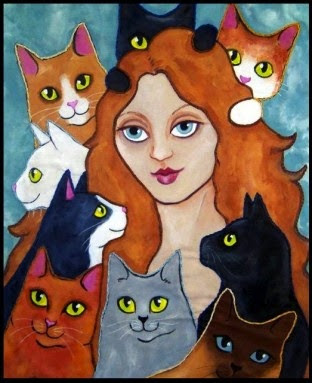| Online: | |
| Visits: | |
| Stories: |

| Story Views | |
| Now: | |
| Last Hour: | |
| Last 24 Hours: | |
| Total: | |
The Danger of Cats for Rh negatives
Vatic Note: This is just another toxin that RH negs need to stay away from and since I am not a doctor, nor do I have any special medicinal training, I am leaving this up to you. I felt it sufficient to issue this as a warning because there are a lot of loose cats out there, so beware. Read this below and you decide.
The Danger of Cats for Rh negatives
http://rhnegativebloodsecrets.blogspot.co.uk/2015/01/the-danger-of-cats-for-rh-negatives.html
By Admin, The RH Negative Blood Secrets
Rh negatives are more deeply affected by the disease Toxoplasma gondii, an older post on this blog show how some scientists were even trying to make out that Rh negative blood is the result of the disease. That is absolute rubbish of course. There are many diseases, like AIDs, Black Death, Ebola, Small Pox and many more that only affect Rh positives and not us, but of course they will use anything against us, to make out our rare blood is some how a mutation, rather than just a purer and more ancient version of their own blood.
- by consuming raw or undercooked meat containing T. gondii tissue cysts. especially from eating raw or undercooked pork.
- by ingesting water, soil, vegetables, or anything contaminated with oocysts shed in the feces of an infected animal. Cat fecal matter is particularly dangerous: Just one cyst consumed by a cat will result in millions of oocysts. This is why physicians recommend pregnant or ill persons do not clean the cat's litter box at home.
- from a blood transfusion or organ transplant
- or transplacental transmission from mother to fetus, particularly when T. gondii is contracted during pregnancy.
Sexual reproduction in the feline definitive host
When a member of the cat family is infected with T. gondii (e.g. by consuming an infected mouse laden with the parasite's tissue cysts), the parasite survives passage through the stomach, eventually infecting epithelial cells of the cat's small intestine. Inside these intestinal cells, the parasites undergo sexual development and reproduction, producing millions of thick-walled, zygote-containing cysts known as oocysts.
Feline shedding of oocysts
Infected epithelial cells eventually rupture and release oocysts into the intestinal lumen, whereupon they are shed in the cat's feces. Oocysts can then spread to soil, water, food, or anything potentially contaminated with the feces. Highly resilient, oocysts can survive and remain infective for many months in cold and dry climates.
Ingestion of oocysts by humans or other warm-blooded animals is one of the common routes of infection. Humans can be exposed to oocysts by, for example, consuming unwashed vegetables or contaminated water, or by handling the feces (litter) of an infected cat. Although cats can also be infected by ingesting oocysts, they are much less sensitive to oocyst infection than are intermediate hosts.
Toxoplasma gondii – also causes schizophrenia in those affected the most, i.e. Rh negatives.
“Crazy cat lady syndrome” is a term coined by news organizations to describe scientific findings that link the parasite Toxoplasma gondii to several mental disorders and behavioral problems. The term crazy cat lady syndrome draws on both stereotype and popular cultural reference.
It was originated as instances of the aforementioned afflictions were noted amongst the populace. Cat lady is a cultural stereotype of a woman who compulsively hoards cats and dotes upon them. Jaroslav Flegr (biologist) is a proponent of the theory that toxoplasmosis affects human behavior.
Louis Wain (artist) was famous for painting cats; he later developed schizophrenia, which was due to toxoplasmosis resulting from his prolonged exposure to cats.
Arthur Ashe (tennis player) developed neurological problems from toxoplasmosis.
Merritt Butrick (actor) died from toxoplasmosis as a result of his already-weakened immune system.
Prince François, Count of Clermont his disability caused him to be overlooked in the line of succession.
Leslie Ash (actress) contracted toxoplasmosis in the second month of pregnancy.
Sebastian Coe (British middle-distance runner) contracted toxoplasmosis.
Martina Navratilova suffered from toxoplasmosis during the 1982 US Open.
The article is reproduced in accordance with Section 107 of title 17 of the Copyright Law of the United States relating to fair-use and is for the purposes of criticism, comment, news reporting, teaching, scholarship, and research.
Source: http://vaticproject.blogspot.com/2015/03/the-danger-of-cats-for-rh-negatives.html






That’s crap article is just an excuse to exterminate cats.
It also assumes that people with the Rh factor are subhuman, compared to GMO mutants.
In nature, the inability to create an antigen, hormone, enzyme, etc, represents devolution, although we consider people with underdeveloped teeth or other deficiencies to be human beings.
Also, of which we were aware, the author has no falsifiable documentation of the bloodtypes of either the toxoplasma cases or the purported Merovingians / special people, who we have to read about.
This might as well have come from The Onion.